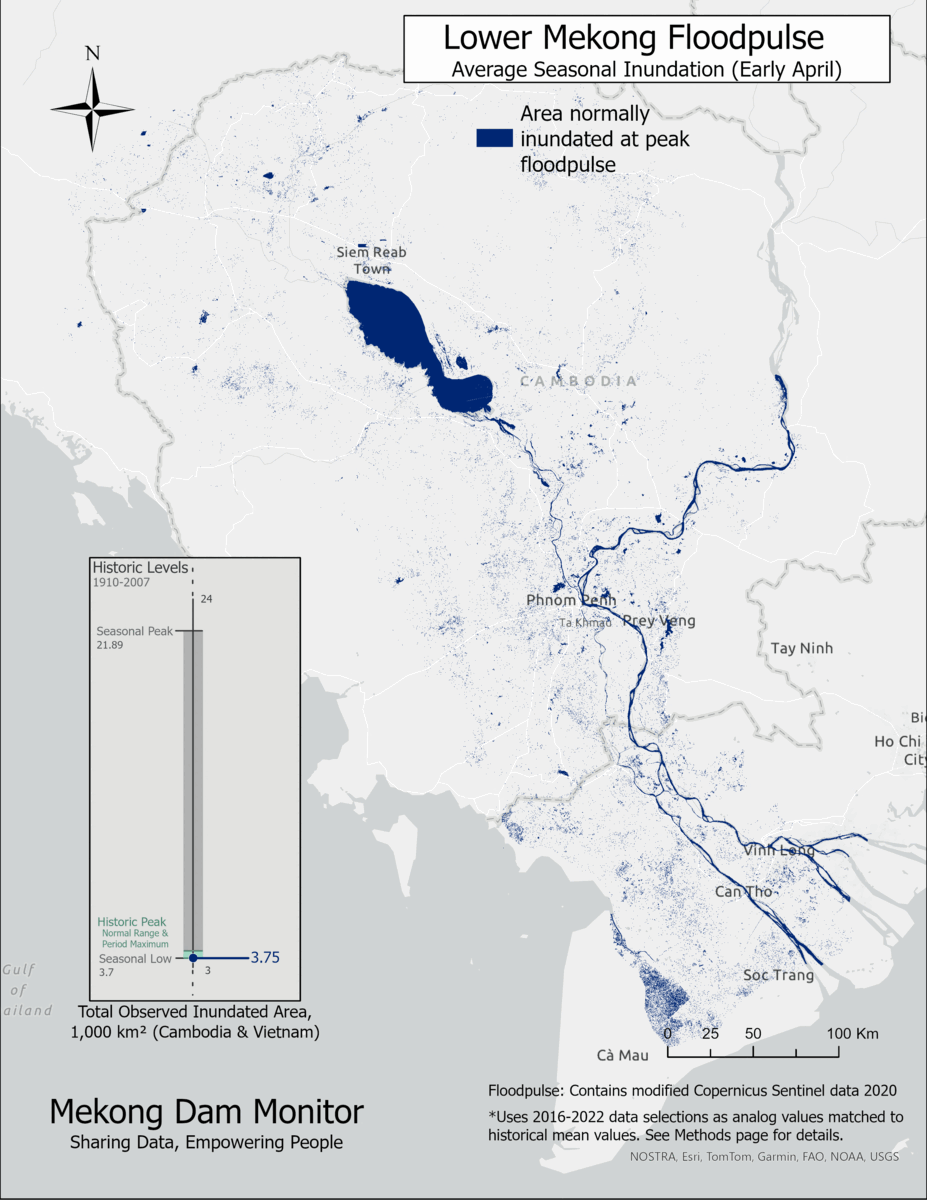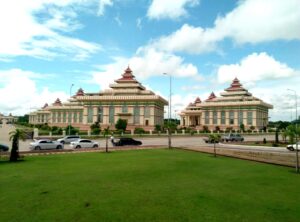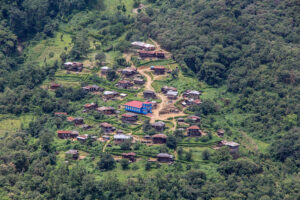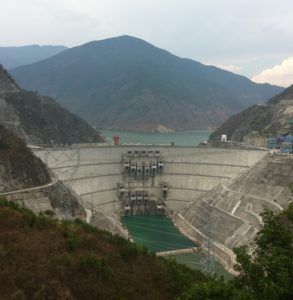The Mekong Floodpulse and Tonle Sap Expansion are often described as the beating heart of the Mekong Basin. During normal wet season conditions, the floodpulse causes the Tonle Sap Lake’s area expands to five times its dry season size and fills the lake with sixty times its dry season volume of water. This expansion is mostly driven by higher levels in the Mekong mainstream, which causes the famous “Tonle Sap Reversal” where the river which traditionally flows out of the Tonle Sap reverses direction. This reversal sends water from the Mekong into the Tonle Sap, and transported with that water are fish eggs and larvae which find a rich habitat inside the Tonle Sap Lake where the fish feed and grow.
As the wet season rains subside, the level of the Mekong mainstream drops again and water begins to flow back out of the Tonle Sap Lake, returning the Tonle Sap River to its normal direction of flow toward the ocean. At the end of the wet season, the Tonle Sap begins to contract and fish species migrate into the Mekong to find spawning grounds upstream. The Mekong Delta in Vietnam also becomes flush with water late in the dry season as the Tonle Sap contracts and sends water downstream.
It is this process that makes the Tonle Sap Lake the world’s largest freshwater fishery with roughly 500,000 tons of fish caught throughout the year. Similarly, it is this process that makes the Mekong Basin account for 20% of the world’s freshwater fish catch. More than 3 million people live and fish on the lake and along its shorelines, and the fish catch in Cambodia alone is responsible for 60-70% of the national population’s animal protein intake.
This animated GIF shows the 2018 floodpulse and expansion process which tracks closely to a normal expansion process when compared to discharge data for 100 years at Cambodia’s Tonle Sap gauge (Prek Kdam). The blue area shows natural inundation as identified by Sentinel-1 SAR (synthetic aperture radar) satellites.
Please feel free to make use of this animated GIF in presentations, research, and other purposes with attribution to the Stimson Center.




